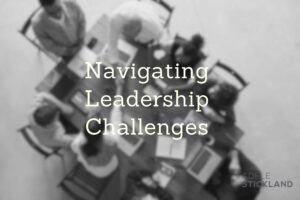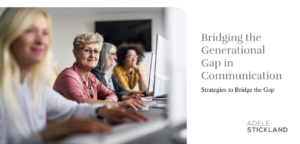
Resilience Workplace Workshops
Reducing the long term effects of stress is essential for organisations to move past the current crisis into a stronger future. Creating resilience workplace training that helps to reduce workplace stress is now fundamental. Planning wellbeing programmes are no longer nice to have but are now essential to assist employees to cope with the increasing demands of work, home and the global pandemic. This blog will outline what is workplace stress, how it is affecting your organisation and how training can reduce stress, increase productivity and ensure a stronger future for organisations.
What is the impact of stress on your organisation?
I’ve recently been having conversations with managers who are increasingly using words like ‘overwhelm,’ burnout, exhaustion and phrases like ‘I can’t take this anymore.’ Negative attrition is increasing. Organisations are losing valued staff. Exhaustion is affecting productivity, as key performing employees who are responsible for driving sales and increasing revenue are becoming overwhelmed and are looking for strategies to cope with the pandemic.
Creating stress management tools for employees is an important focus for organisations.
Creating a resilient workplace strategy that will reduce work stress is a priority. This blog will outline a workable resilient strategy to create stress management tools that will move organisations from reactive overwhelm towards a strategic, effective resilient wellbeing strategy that will increase the ROI for organisations in the future.
If you like to read more about How can organisations develop an effective Wellbeing strategy?
What is Workplace Stress?
Workplace stress is defined as the harmful physical and emotional responses that occur when the requirements of the job do not match the capabilities, resources, or needs of the employee and lead to poor health. During the pandemic, these stressors have increased and workplace stress is a consequence of:
- poor communication between teams and line managers with more meetings and less strategic work time
- poor interpersonal relationships that are now highlighted
- too much responsibility: colleagues leading more complex and varied projects whilst other managers are taking up the slack
- lack of management support with line managers coping and addressing their own issues
- demanding working challenges due to challenges of lockdown
- unrealistic deadlines; projects are taking longer and timelines aren’t not reflecting this
What impact does employee stress have on your business?
In 2016 MIND research showed that 21% of staff called in sick to avoid work due to stress, however, 90% gave a different reason for being off sick. Stress was not mentioned. The research illustrated that stress and the longer-term effects of chronic stress which leads to burnout are still phrases that managers are not comfortable with. Stress carries the stigma of personal failure, which in turn creates a greater personal load for key performers but also inhibits the organisation’s ability to investigate the problem and find out what they can do to resolve it.
The decreases in absenteeism in the workplace
In the UK, employees take an average of 6.9 days of sick leave per year. The CIPD – the professional body for HR and people development more recently reported a drop in average absence rate over the last two years:
- 2019 decrease in absenteeism to 5.9 days per employee per year
- 2020 decrease in absenteeism to 5.8 days per employee per year
This reduction in absenteeism is in part due to the result of a strong framework to support people’s well-being. It is now well recognised that a culture of well-being, driven by great people management, is good for employees and good for business. It makes the workplace a more productive, attractive and socially responsible place to work.
In addition, the increased working from home means that sick days aren’t registered in the same way, fewer sick days because less effort to haul yourself into the office, which means an increase in turning up to work whilst not feeling great – increased presenteeism.
Increase of presenteeism in the workplace
Looking deeper at the reduced absenteeism figure shows that whilst employees are not taking sick days, there is a worrying trend that presenteeism – working whilst unwell is increasing.
Presenteeism will expose the individual and their colleagues to more serious mental health issues. In addition to this working whilst unwell will affect team relationships and cohesion and organisational morale.
“What was wrong with George on the call today?” with no ‘water cooler’ conversation there is nowhere to park these thoughts other than burying them which means that they are ready to pop up at a later date.
In addition to presentism – leaveism is also on the rise.
Millennials have long been accused of the ‘always on’ culture but this is now a normalised way of behaving and is creeping into everyone’s life regardless of generation.
With the increasingly blurred line between work and home, increasing levels of presenteeism and leaveism – developing an ‘engaged’ mental health strategy across the organisation has never been so critical to improve the lives of employees and sustain organisational productivity.
What is Resilience Workplace Training?
Many organisations are now taking mental health seriously, most have MHFAs, EAP systems even in-house or external psychological support systems. The next level is assessing the level of engagement with these facilities and training. How connected are employees to the training, is it relevant to them? This is now the next stage in the resiliency process moving from awareness to behavioural change.
Many organisations profess to have well established mental health and resilient wellbeing programmes but how often do these programmes match both the:
- actual culture of the organization
- the requirements, vision and mission of the recipients
CIPD latest report finding that mental distress and stress remain far too high despite the varied wellbeing programme. Therefore a more concerted action is needed to affect necessary cultural change so that the top leader’s values are aligned with the organisational wellbeing programmes.
This is why I created my resilience training. The 6 core levels begin with a simple check-in. Identify and recognising the current corporate or organisational culture and whether it is in alignment or opposition to the wellbeing strategy. The first step is an accurate picture of what is going on within an organisation.
How does resilience training work?
The 6 Core Levels of Organisational Resilience ™️ is a continuum of six organisational resilience levels which in a perfect world would start at level 1. Each level ideally is strengthened and build upon the previous level. and built upon through each level or stage.
The first level is an increased awareness of how the organisation wellbeing programme is perceived throughout the company. How employees really feel about the culture of the company, does it match their values? Does the wellbeing strategy match what senior management say and do every day or is there a mismatch?
Checking in on the reality of the situation in terms of what the senior leaders want and what the employees feel is actually happening. The organisation vision and mission match what employee value and wants from their work. A check to understand where the company is right now and matching this with where the organisation senior leaderships sees its future and where it wants to go.
Are managers simply overwhelmed or closer to burnout?
For example, one of the biggest gaps I’ve noticed when working with organisations in the UK is the parity between what key managers say and how they feel.
Managers are comfortable with feelings of overwhelm. This is a safe phrase. ‘Overwhelmed’ is in common usage and has no negative consequences. It happens, workloads get too much. However ‘burnout’ is not an open and honest conversation discussion. As a consequence, whilst teams are comfortable using the word overwhelmed their actual reality is closer to burnout, which is a state they are not comfortable to admit to. This can change with an organisational culture that is comfortable around open and direct conversations around mental health.
In many organisations, burnout is attached to personal behaviour and is the consequences of a personal failing and therefore shame. Individual behaviour that they couldn’t manage. The fault is theirs, it is not discussed which means it is harder to spot, diagnose and avert.
“I only spoke to Jim yesterday he seemed fine, I had absolutely no idea he was close to taking his own life”
Finding out how managers see their own levels of wellbeing, what is normal for them and what is extraordinary and what provision is in place to assist when work/life balance becomes unmanageable is the first stage level of the resilience programme.
How My Resilience Training Reduces Workplace Stress
Here is a brief overview of how my Resilience Workplace Training reduces workplace stress, if you’d like more details then book a call with me, Adele Stickland and together we can discover what stage your organisation is currently at, and how you can best implement the most proactive strategy that will serve your employees.
Level 1: Company culture Check
Check the culture and climate of the organisation
As outlined above, the initial ‘check’ begins with an organisational audit which can be assessed through employee engagement surveys, wellbeing surveys or more personally and directly through a cultural check-in focus group.
Level 2: Create awareness around Choice for managers
After improved awareness of the actual cultural temperature around wellbeing, this is followed up with subsequent awareness for key managers to create consistency across the organisation so that all managers are aware of the values of the organisations.
Level 3: Managers develop a Conscious Commitment to incorporate resiliency techniques
Taking the previous level to a deeper engagement so that key managers change their behaviour and embed the learnt skills and resiliency techniques on a daily basis.
Level 4: Combine and Integrate wellbeing response company-wide
This level is the organisational wide health and wellbeing support using training based on findings in previous levels.
Level 5: Consistency
Level 5 is creating habitual consistency with these behaviours. Embedding resilient habits that are easier to maintain and supported by a feedback loop.
Level 6: Consolidate and Community
Level 6: is the connection to the community. Individuals working for a charitable purpose creates a stronger and powerful feeling of wellbeing and creates a resilient individual. Organisations giving back to the community, improve their brand profile, the organisational image so that they are seen and known as the ‘go-to the employer of the region and recruit more staff
“If you want people to do more, give them money.
If you want them to do a better job, give them meaning.” ScienceForWork
What’s the process of hiring me?
How can you work with me as a Wellbeing and Resilience Trainer? With over 20 years of experience, I have a unique insight with a powerful combination of personal experience and industry background means that I am ideally placed to understand the needs of businesses looking to improve wellness programmes and specifically tailor them to your requirements.
The workshops and training development have been delivered inside construction companies, law firms, technology and data management consultancies, commercial property developers as well as the financial sector.
The best way forward is to book a call with me, Adele Stickland and together we can discover what stage your organisation is currently at, and how you can best implement the most proactive strategy that will serve your employees.
If you or your organisation would like assistance in creating or developing an existing wellbeing programme to frame conversations and support managers and employees then:
-
- Book a call, Adele Stickland
- Email me directly Adele Stickland adelestickland1@gmail.com
- Contact me via LinkedIn
- DOWNLOAD: White Paper: How much is mental ill-health in the workplace costing?
White Paper: How much is mental ill-health in the workplace costing?
What ROI will you get from my resilience training?
Research has shown that simple & proactive resilience training offers organisations an ROI return on investment five times (5:1)
In some industry sectors as much as 11:1 ROI
Passionate organisations that have enhanced and developed the ’employee wellbeing proposition’ a stage further. Organisations that have prioritised staff wellbeing but also created a culture that is committed to the diversity, wellbeing and social values that align with the individuals’ view of the world.
Retaining and attracting key performers is crucial so that business thrive.
If you are interested in reading more about How to Build Resilience in the Workplace: The Ultimate Guide
Who is my resilience training aimed at?
Team leaders and key managers will benefit from this type of training.
Middle to senior managers, key performers who are feeling pressured and feeling ‘overwhelm’, which is affecting their job roles and appear to be overtired and overstressed.
The key instigators of organisational wellbeing culture. Whilst manager approaches differ widely across the organisation and resilience training will give key managers a consistent approach and the confidence to start mental health conversations and encourage resilience techniques with their respective teams.
We can’t meet as a team, do you do online training?
Online learning is becoming a much more attractive option when it comes to personal and professional development. It is particularly suitable for meeting managers’ needs. Advances in technology and techniques that I have created over the years, mean that engagement is high with Resilience online training.
Managers have a tailored training experience that is memorable and 53% of millennials (the generation due to dominating the workforce by 2025) say learning new skills will motivate them to stay in their job.
Strong online resilience training will meet:
- managers training need
- attract talent
- reduce staff turnover for the organisation.
Work colleagues are missing out on the indirect benefits of being in the workplace – the shared companionship, creative fluidity and camaraderie that the office space provided has all been lost.
Book a call with me: Book a call: Adele Stickland and together we can discover what stage your organisation is currently at, and how you can best implement the most proactive strategy that will serve your employees.





